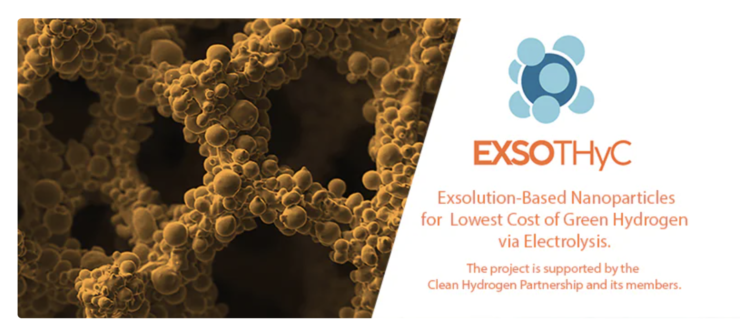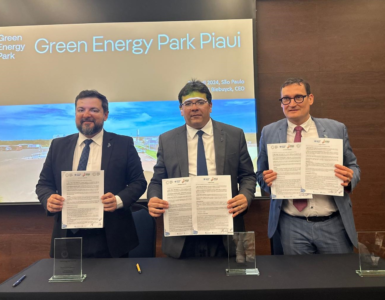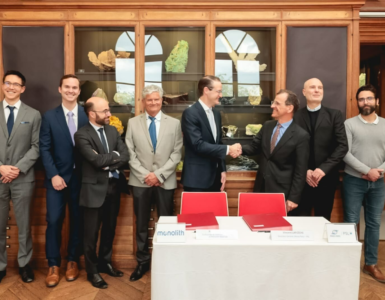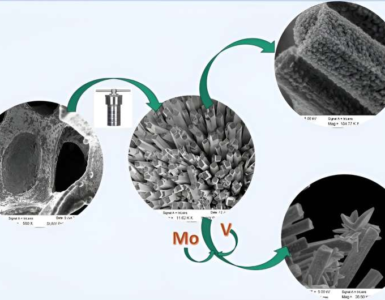EXSOTHyC – A new European project tackles green hydrogen production costs via material innovation.
The consortium partners are thrilled to announce the commencement of EXSOTHyC, a three-year research project funded by the Clean Hydrogen Partnership focusing on electrolyser innovation. The project is a joint effort between the European industry and research organisations.
EXSOTHyC is coordinated by Stargate Hydrogen and project partners include the University of Saint Andrews, Agfa-Gevaert, Eindhoven University of Technology, and Fraunhofer Institute for Manufacturing Technology and Advanced Materials IFAM. The project brings together researchers and engineers from five countries: Estonia, the UK, Belgium, the Netherlands, and Germany.
In contrast to the commonly adopted approach, the EXSOTHyC project will optimise electrolyser operation towards lower voltages and higher efficiencies. Within the project, a breakthrough concept for catalyst materials, cell and stack components for alkaline electrolysers will be developed. The full name of the project is ‘Exsolution-based Nanoparticles for the Lowest Cost of Green Hydrogen via Electrolysis’. A class of ceramic materials that form highly active metallic nanoparticles on the surface upon exposure to reducing atmosphere (a process called ‘exsolution’), plays a central role in the project.
🔥 What about we co-host a webinar? Let's educate, captivate, and convert the hydrogen economy!
Hydrogen Central is the global go-to online magazine for the hydrogen economy, we can help you host impactful webinars that become a global reference on your topic and are an evergreen source of leads. Click here to request more details
Rainer Küngas, the CTO of Stargate Hydrogen, says:
Exsolution materials have revolutionized the fields of automotive emissions control and solid oxide electrolysis.
“In EXSOTHyC, we are demonstrating the potential of this versatile class of ceramic materials for improving the performance of alkaline electrolysers. We are proud to be coordinating the project and look forward to developing the world’s first alkaline electrolysis stack based on exsolution materials as part of the project.”
The development of exsolution materials in the project will be spearheaded by Professor John T. S. Irvine and his team at the University of St. Andrews. Prof. Irvine has authored many of the seminal publications on exsolved nanoparticles, demonstrating the performance and versatility of this class of materials, as well as their unique resilience to degradation.
However, the EXSOTHyC project is not only about making the use of exsolution materials in low-temperature electrolysis applications less exotic, but includes several important further innovations.
The electrode development and fabrication efforts in the project are led by the Fraunhofer Institute for Manufacturing Technology and Advanced Materials IFAM in Dresden.
Dr.-Ing. Nadine Eißmann, Group Manager Functional Materials at Fraunhofer IFAM, comments:
We are excited to coat this new class of catalyst material on highly porous three-dimensional electrodes.
“We will pay special attention on activity, robustness, and long-term durability of the resulting electrodes to enable the path for an industrial application within the upcoming years.”
The operating window of state-of-the-art alkaline electrolysers is often limited due to gas crossover, a phenomenon where gases pass through the porous diaphragm separating the anode and the cathode in the cell. Agfa-Gevaert, the producer of Zirfon® membranes, will develop next-generation diaphragms in the project to improve the performance of alkaline cells, particularly at lower current densities.
Ruben De Bruycker, Innovation & Strategy Manager at Agfa says:
EXSOTHyC allows us to explore breakthrough membrane concepts, focusing on improving the interplay with electrodes and further increasing the dynamic behavior of alkaline water electrolysers.
The project further involves the development of novel membrane electrode assembly concepts, integrating electrodes onto Zirfon® membranes, as well as investigations in the dynamic operation stability of alkaline electrolysers. These two activities in the project are led by Eindhoven University of Technology.
Dr. Maximilian Demnitz, from TU/Eindhoven comments:
We at TU/e are excited to be part of the cross European consortium to enhance alkaline water electrolysis technology.
“Within the EXSOTHyC project, TU/e will focus on multiple core aspects of AWE, such as improving the electrode diaphragm interface via catalyst coated diaphragms, developing accelerated stress test strategies, and deciphering the role of shunt and reverse currents within electrolyser stacks. As the project brings together excellent research institutions as well as front industry runners for the technology, we look forward on how to best make cheap green hydrogen a reality through our combined efforts.”
The EXSOTHyC Project represents a collaborative endeavor at the forefront of innovation, bringing together diverse expertise to address the urgent need for sustainable energy solutions. The project’s esteemed partners are committed to driving the world towards a cleaner, greener future via breakthrough innovation in alkaline electrolysis technology.
READ the latest news shaping the hydrogen market at Hydrogen Central
EXSOTHyC – A new European project tackles green hydrogen production costs via material innovation. source








